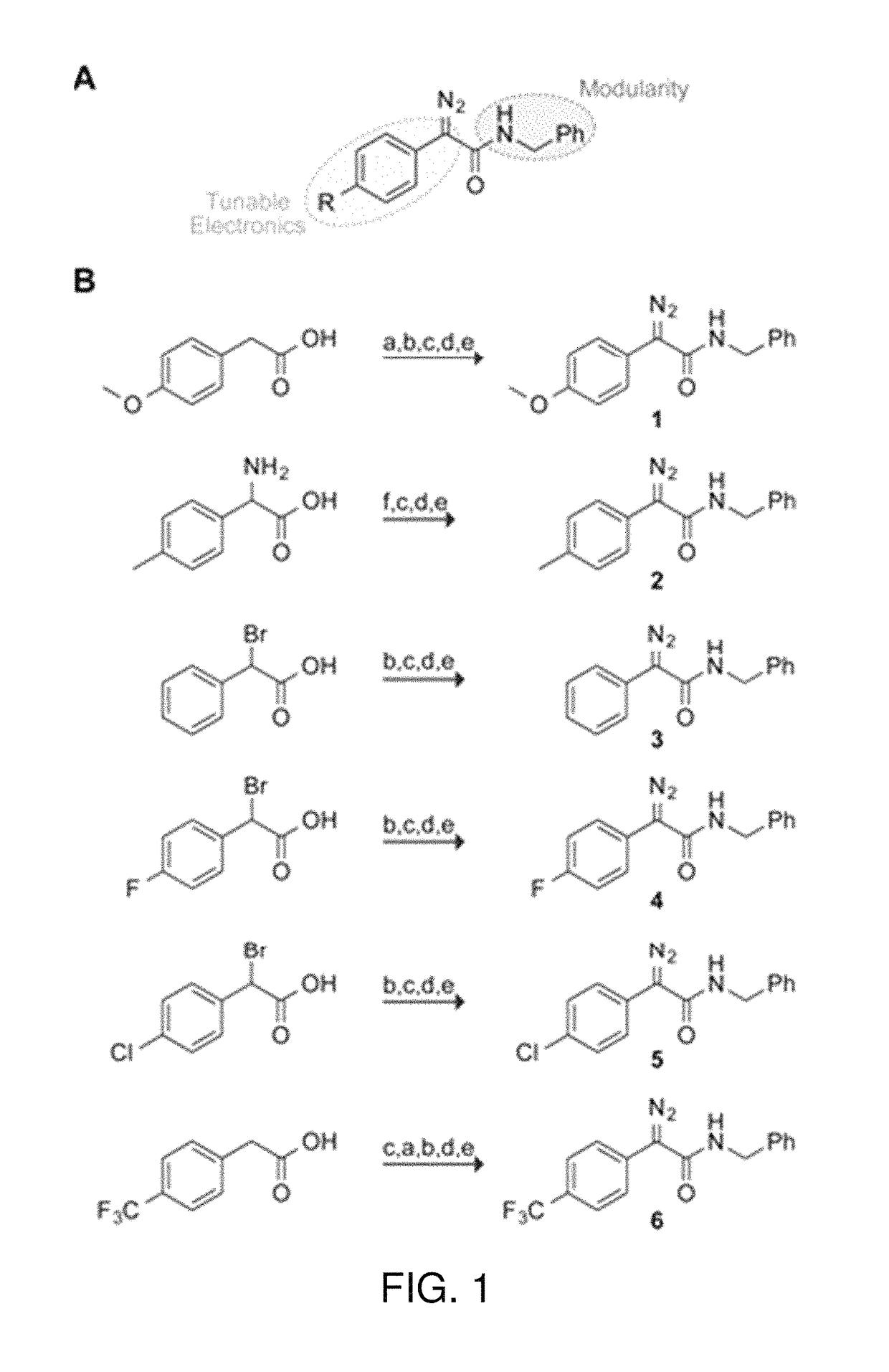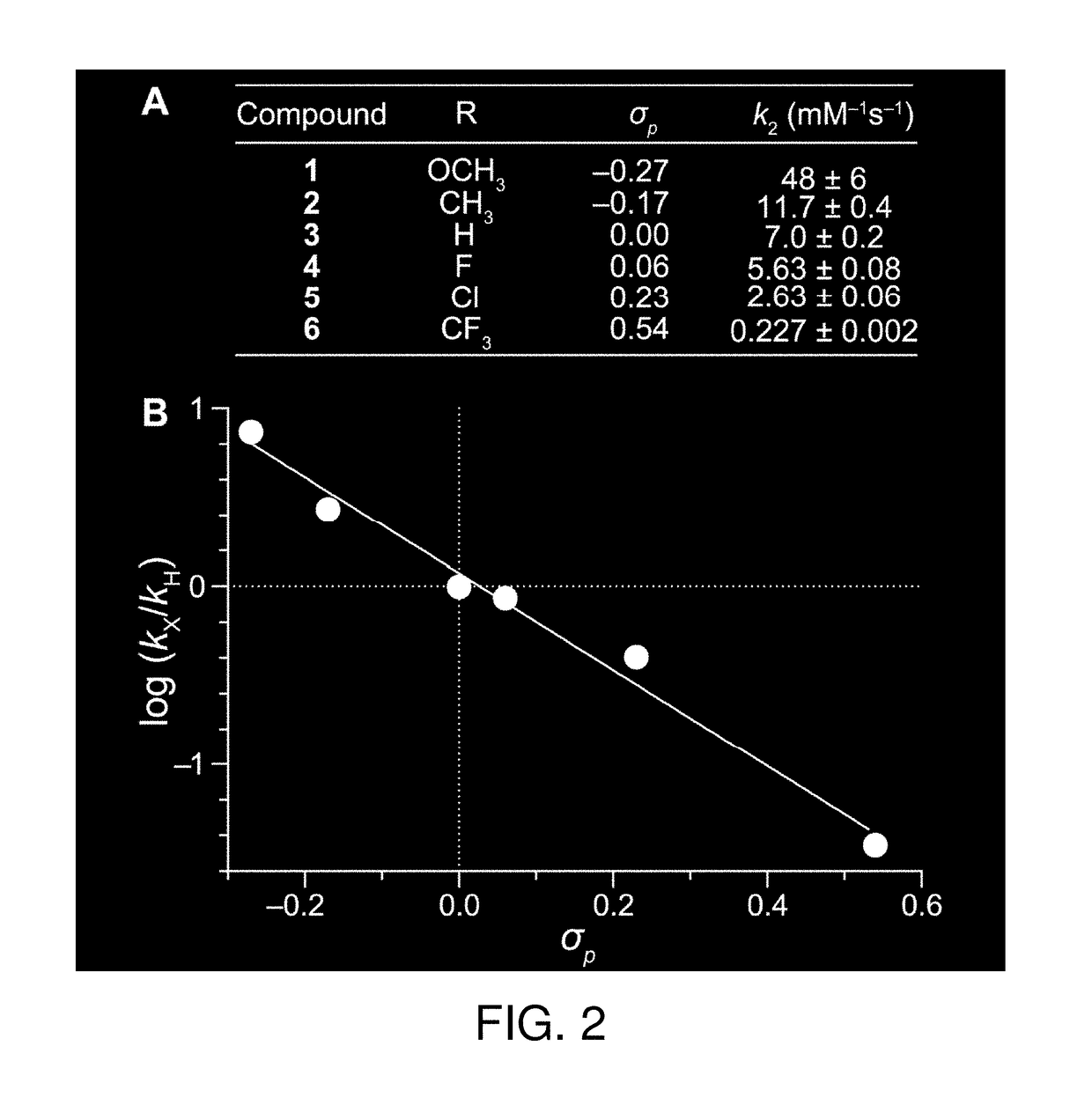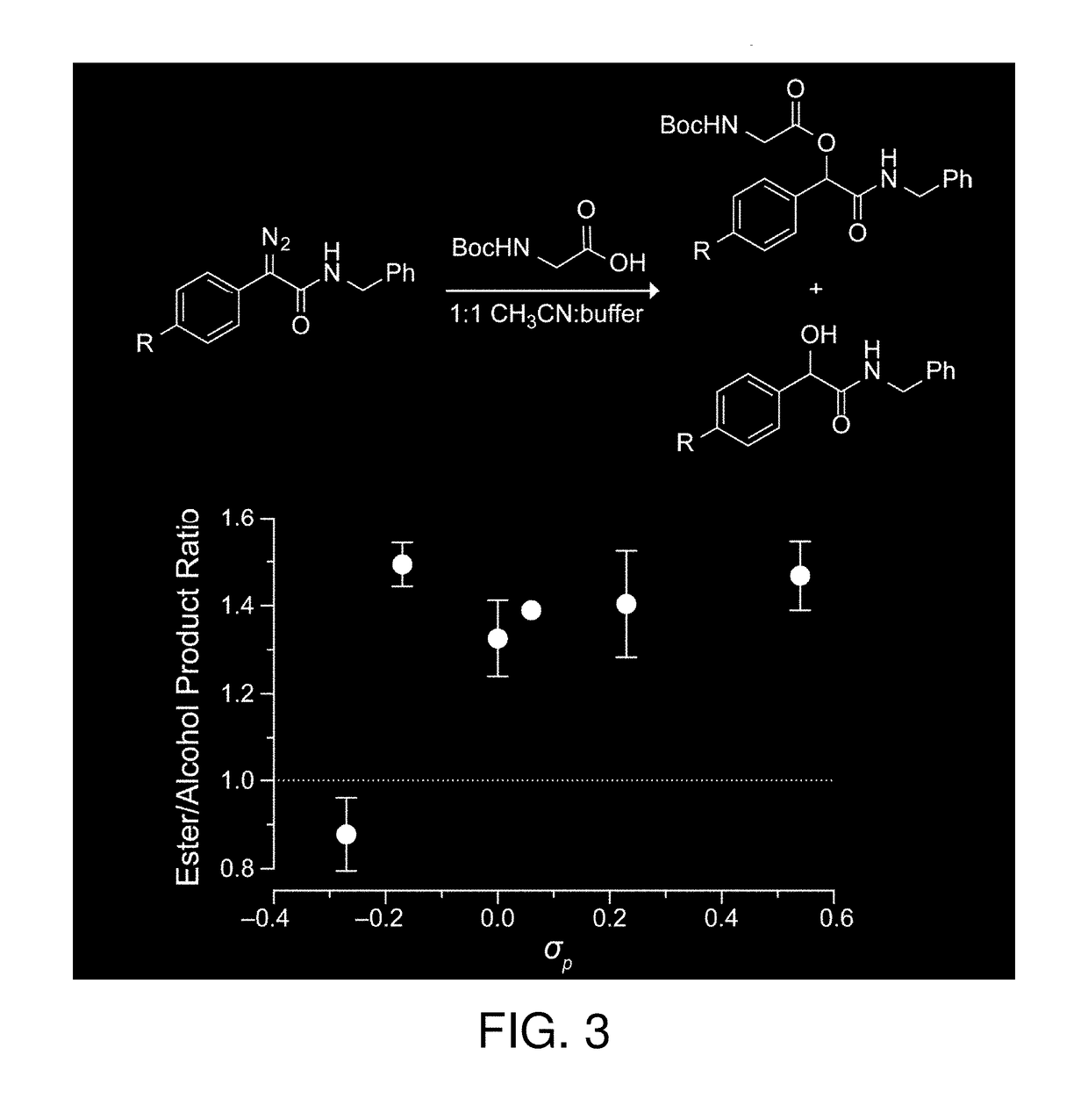Reagents and methods for esterification
a technology of esterification and reagents, which is applied in the direction of organic chemistry, peptides, enzyme stabilisation, etc., can solve the problems of not being particularly useful in biologic systems, providing access to methyl esters, and non-specific reactivity, and achieves cell targeting, cell penetration, and facilitate labeling
- Summary
- Abstract
- Description
- Claims
- Application Information
AI Technical Summary
Benefits of technology
Problems solved by technology
Method used
Image
Examples
example 1
xperimental
[0178]Materials.
[0179]Silica gel (40 μm; 230-400 mesh) was from SiliCycle. Reagents were obtained from commercial sources and used without further purification. Dichloromethane (DMC) and tetrahydrofuran were dried over a column of alumina. Thin-layer chromatography (TLC) was performed on plates of EMD 250 μm silica 60-F254.
[0180]Solvent Removal.
[0181]The phrase “concentrated under reduced pressure” refers to the removal of solvents and other volatile materials using a rotary evaporator at water aspirator pressure (<20 torr) while maintaining a water bath below 40° C. Residual solvent was removed from samples at high vacuum (<0.1 torr).
[0182]NMR Spectroscopy.
[0183]1H and 13C NMR spectra for all compounds were acquired with Bruker spectrometers in the National Magnetic Resonance Facility at Madison operating at 400, 500, 600, or 750 MHz. Chemical shift data are reported in units of δ□ppm) relative to an internal standard (residual solvent or TMS).
[0184]Mass Spectrometry.
[01...
example 2
and Characterization Data
[0188]Preparation of α-Bromoacid S1
[0189]
4-Methoxyphenylacetic acid (5.000 g, 30.10 mmol) was dissolved in CCl4 (50 mL). N-Bromosuccinimide (NBS, 5.625 g, 31.6 mmol) and AlBN (0.985 g, 6.0 mmol) were added. The resulting solution was heated to 80° C. and allowed to reflux overnight. The succinimide by-product was removed by filtration, and the solution was concentrated under reduced pressure. The residue was purified by chromatography on silica gel, eluting with 1:1 EtOAc / hexanes to afford S1 (5.705 g, 78%) as a white solid.
[0190]Data for S1:
[0191]1H NMR (500 MHz, CDCl3, δ): 7.50 (d, 2H, J=8.8 Hz), 6.90 (d, 2H, J=8.8 Hz), 5.36 (s, 1H), 3.82 (s, 1H.) 13C NMR (125 MHz, CDCl3, δ): 173.4, 160.5, 130.2, 126.8, 114.3, 55.4, 45.9, HRMS (ESI−) m / z calcd for C9H9BrO3 [M−H]− 242.9662; found, 242.9660.
[0192]Preparation of α-Azido Acid S2
[0193]
α-Bromo-4-methoxyphenylacetic acid S1 (0.802 g, 3.3 mmol) was dissolved in 1:1 THF / H2O (4 mL). Sodium azide (0.429 g, 6.6 mmol) ...
example 3
nt of Reaction Rate Constants
[0260]Each diazo compound and BocGlyOH were dissolved separately in CD3CN at a concentration of 50 mM. The solutions were combined in an NMR tube at an equimolar ratio, mixed, and then inserted immediately into an NMR spectrometer. A 16-scan 1H NMR spectrum was acquired every 10 min. Percent conversion was monitored by disappearance of starting material and appearance of product as determined by integration of multiple 1H NMR spectral peaks. No other products were apparent by 1H NMR spectroscopy. The value of the second-order rate constant was determined by linear regression analysis of a plot of 1 / [diazo] versus time (data not shown). All reactions were performed in triplicate.
PUM
| Property | Measurement | Unit |
|---|---|---|
| dissociation constant | aaaaa | aaaaa |
| temperature | aaaaa | aaaaa |
| temperature | aaaaa | aaaaa |
Abstract
Description
Claims
Application Information
 Login to View More
Login to View More - R&D
- Intellectual Property
- Life Sciences
- Materials
- Tech Scout
- Unparalleled Data Quality
- Higher Quality Content
- 60% Fewer Hallucinations
Browse by: Latest US Patents, China's latest patents, Technical Efficacy Thesaurus, Application Domain, Technology Topic, Popular Technical Reports.
© 2025 PatSnap. All rights reserved.Legal|Privacy policy|Modern Slavery Act Transparency Statement|Sitemap|About US| Contact US: help@patsnap.com



